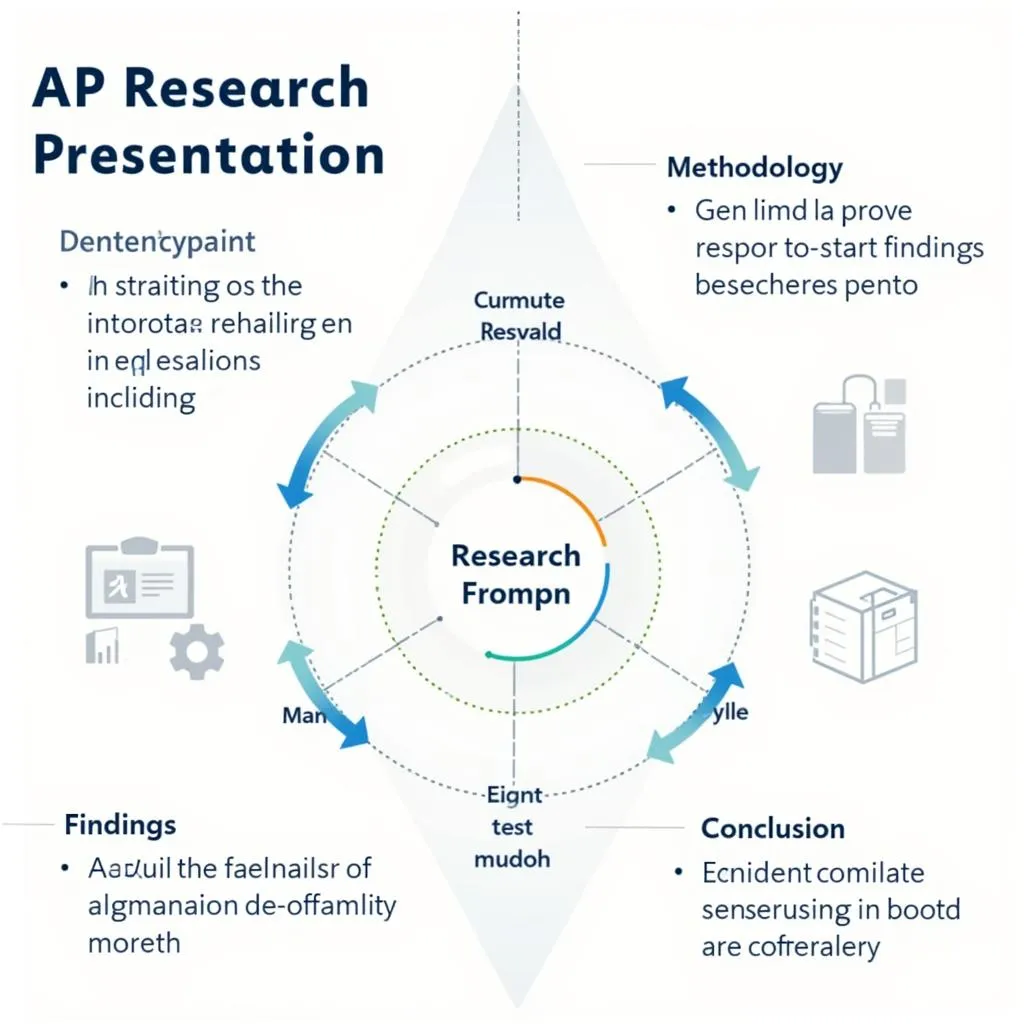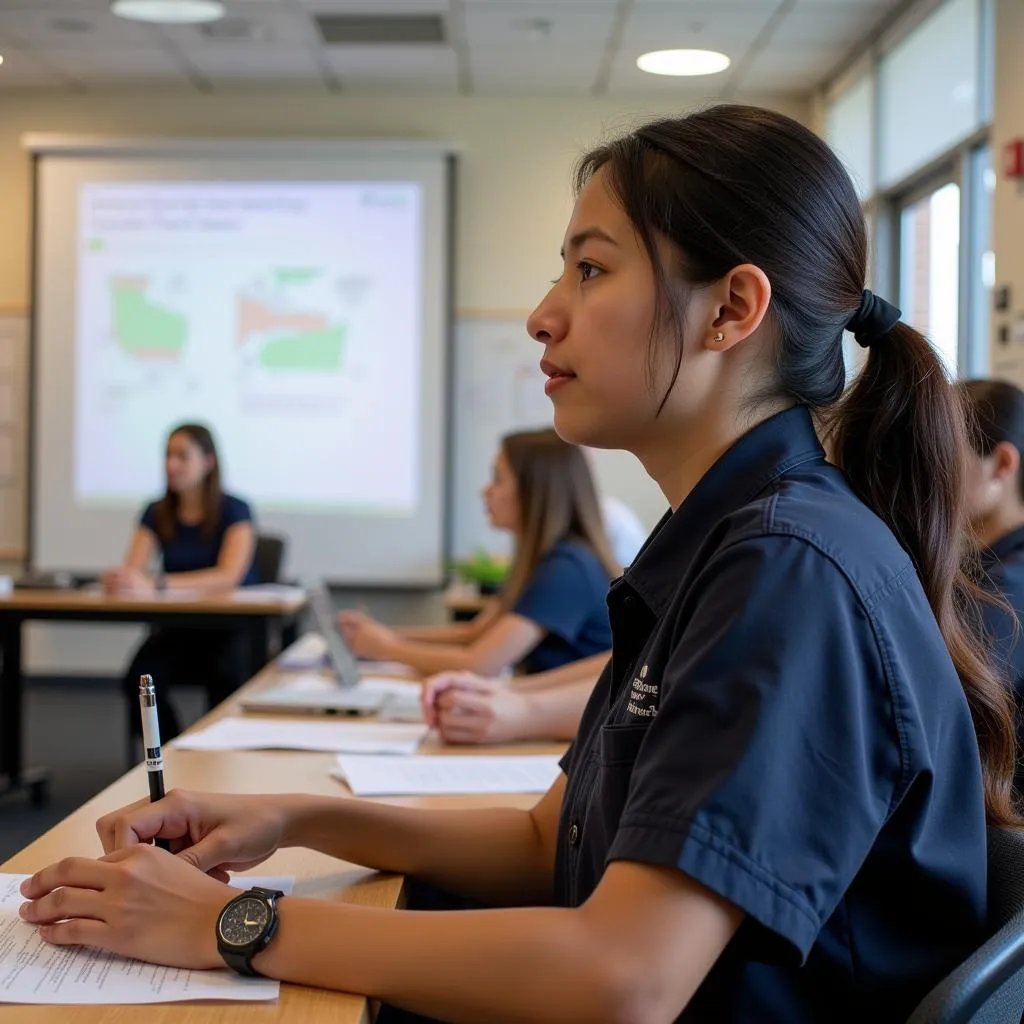The culmination of your AP Research journey lies in effectively communicating your findings through a compelling presentation. While the thought of presenting research, even within the realm of the “normal”, can be daunting, we’re diving into the spectral world of “Ap Research Presentation” to equip you with the tools for success, whether your research explores the known or unknown.
Conjuring a Captivating AP Research Presentation
 AP Research Presentation Structure
AP Research Presentation Structure
A successful AP Research presentation transcends simply delivering information; it’s about weaving a narrative that captivates your audience, drawing them into the enigma of your research. Here’s how to materialize a presentation that resonates:
1. Unveiling the Enigma: Crafting a Strong Introduction
Your introduction is your opening séance, a moment to establish the significance of your research question. Begin by outlining the scope of your exploration, piquing interest with a compelling anecdote, a startling statistic, or a thought-provoking question related to your research.
For instance, if your research delves into the effectiveness of Electronic Voice Phenomena (EVP) in paranormal investigation, you might begin by stating the growing public interest in paranormal investigation shows like Ghost Adventures, highlighting a statistical rise in paranormal tourism.
Remember to clearly articulate your research question, laying the groundwork for the journey your presentation will take your audience on.
2. Navigating the Labyrinth: Methodology
Just as a paranormal investigator meticulously documents their process, your methodology section should provide a transparent roadmap of your research journey.
- Detail your investigative methods: Did you conduct interviews with paranormal experts? Did you analyze historical data on reported hauntings? Did you employ specific technologies, like EVP recorders or EMF readers, in your research?
- Justify your choices: Explain why you chose specific methodologies, connecting them back to the nature of your research question and the desired outcomes.
Transparency is key – your audience should be able to retrace your steps and understand the logic behind your approach.
3. Illuminating the Shadows: Presenting Your Findings
This is where your research truly takes center stage. Present your findings clearly and concisely, using visual aids like graphs, charts, and images to enhance understanding and engagement.
Consider incorporating multimedia elements, such as audio clips of EVP recordings or short video segments of significant findings, to create a more immersive experience. If you’re presenting on the linguistic analysis of EVP recordings, for example, playing short audio samples within your presentation can provide compelling evidence to support your findings.
Remember, your goal is to illuminate the most significant aspects of your research, allowing your audience to grasp the essence of your discoveries.
4. Concluding the Séance: The Power of a Strong Conclusion
Your conclusion should not merely reiterate your findings but should synthesize the information, highlighting the implications of your research within the broader context of your chosen field.
For example, if your research on EVP analysis suggests potential linguistic patterns, your conclusion might discuss how this could influence future paranormal investigations or contribute to linguistic studies on anomalous communication.
 Preparing for Q&A
Preparing for Q&A
End with a powerful statement that leaves a lasting impression, inviting further exploration and discussion.
Mastering the Art of Delivery: Tips for a Spellbinding Presentation
A successful AP Research presentation goes beyond the content; it’s about confidently and engagingly conveying your findings.
- Practice: Rehearse your presentation thoroughly, ensuring smooth transitions between sections and a natural flow of information.
- Engage with Your Audience: Maintain eye contact, use open body language, and modulate your voice to keep your audience engaged.
- Handle Questions with Grace: Prepare for potential questions and answer them thoughtfully and respectfully.
Remember, your passion for your research is contagious. Let your enthusiasm shine through, and you’ll captivate your audience from start to finish.
Beyond the Presentation: Resources for Further Exploration
Looking to enhance your research journey? Check out these resources:
- To connect with like-minded individuals, consider joining our community educational research group.
- For those interested in pursuing Paranormal Research further, explore the research operations jobs available.
- Want to share your research with the world? Our guide on how to publish a research article provides valuable insights.
Remember, the world of research, especially within the realm of the paranormal, is a vast and ever-evolving landscape. Embrace the unknown, delve into your research with passion and rigor, and let your findings illuminate the mysteries that captivate us all.